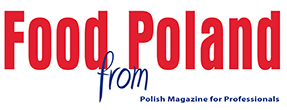Consumer demand for more exciting flavours is inspiring chocolate launches with multi-sensory appeal. Meanwhile, launches with ethical claims are rising fast, addressing consumers’ moral concerns.
Flavour quality remains central to consumers’ choice of chocolate, illustrating the inherently indulgent nature of the category. Indulgence is the top reason to eat chocolate for consumers across major European markets, and 78% of UK consumers prioritise taste when choosing between chocolate products.
Furthermore, consumers are enthusiastic about trying more innovative flavours. Almost half of chocolate buyers in Germany and the UK, and 57% in Poland, would be tempted to buy a product with a new flavour. Therefore, chocolate brands can afford to be bold with flavour innovation given that consumers’ appetite for new experiences is significant. However, consumers’ value-for-money expectations should also be taken into consideration, with brands expected to make sure that flavours are not so unusual to be seen as off-putting. Offering a fine balance of risk and reward is key to tempting consumers into buying out of curiosity.
According to Mintel GNPD (Global New Products Database), a significant proportion of new chocolate launches in Europe are unflavoured/plain while hazelnut remains the most popular flavour within flavoured creations. Orange has seen an increase in launch activity, reaching 3% of total launches in the 12 months to November 2021.
Sustainability remains an important aspect when shopping for chocolate: European consumers are increasingly expecting chocolate brands to communicate their ethical qualities and to demonstrate their commitment to people and the environment. In a competitive sector like chocolate confectionery, ethical credentials can help brands stand out from the crowd provided that they are communicated in a transparent and engaging way. In the UK, for example, 35% of consumers say they mostly buy chocolate with ethical certifications. As a result, more European chocolate producers are launching products that address consumers’ heightened interest in ethics and sustainability. For example, between December 2020 and November 2021, ethical and environmental claims were featured on over half of new chocolate launches in Europe.
APAC
In Asia-Pacific, chocolate brands continue to innovate around new textures, flavours and colours to stimulate consumers’ senses. Responding to consumers’ interest in premium offerings by incorporating high quality and authentic ingredients is also a popular strategy.
Indulgence remains a strong buzzword in the chocolate category, with more than half of Chinese consumers buying chocolate to treat themselves. Innovating around new and unexpected flavours and textures helps to further elevate the indulgent nature of chocolate. For example, in China, 48% of consumers say they have bought chocolate to try a new flavour and 55% would try a chocolate product if it had a rich texture, eg gooey.
As Asia’s chocolate market matures and consumer tastes become more sophisticated, more brands are focussing innovation around more unusual flavours, textures and colours. Launches that stimulate the senses are likely to drive interest and keep consumers engaged given that, for example, 37% of Chinese consumers would like to try chocolate with unconventional flavours, such as wasabi or durian.
In the APAC region, crunchy remains the most common texture descriptor in chocolate – featured on 20% of NPD in the 12 months to November 2021 - while launches with a light, gelled and airy texture have been increasing in profile.
High in demand among Asian consumers are premium chocolate products made with high-quality ingredients. Consumer interest in premium offerings has risen, with 77% of Chinese consumers, and 39% of Australians, stating that they have been regularly buying premium food since the outbreak started. Justifying a premium price tag, chocolate brands underlining high-quality and authentic ingredients are therefore likely to stand out in this region. Looking at innovation activity, premium launches accounted for 7% of all chocolate launches in APAC introduced in the 12 months to November 2021 - showing that there’s still plenty of room for new innovations.
THE US
Seasonal and holiday-themed chocolate has been a notable area of innovation. With the backdrop of COVID-19, the obesity crisis is compelling chocolate producers to cut sugar content and offer products with a ‘better-for-you’ image.
A sizable six in 10 US consumers buy holiday-themed chocolate, illustrating the fact that seasonal celebrations are well-established consumption occasions for chocolate in North America. Whether consumers buy these for themselves or as gifts, seasonal chocolates enjoy mass appeal.
Chocolate brands are boosting innovation efforts around seasonal products, such as new flavours that are designed for a specific holiday, advent calendars and fun chocolates that can excite consumer interest. Between December 2020 and November 2021, as many as 39% of all chocolate launches in the US featured seasonal claims.
The prevalence of dietary diseases and the impact of COVID-19 have made healthy diets a bigger priority for consumers. In July 2020, 65% of US adults were trying to eat healthily all, or most, of the time. This behavioural shift is also relevant for the chocolate category, as 20% of US consumers decreased their consumption in the past year. The leading reason cited for reducing chocolate confectionery consumption was a reduction in sugar intake. Therefore, chocolate brands that are looking to reduce their sugar content or are using natural sugar alternatives are likely to appeal to the growing number of health-conscious consumers. However, since palatability is key, ‘better-for-you’ options need to be tasty as well.
Sugar-related claims remain niche but have steadily increased in new chocolate launches in the US. In the 12 months to November 2021, 5% of US chocolate launches carried ‘no added sugar’ claims, 3% were sugar-free and 2% featured a low-/reduced-sugar claim.
What’s next?
Thinking about the future of the chocolate category, the war on sugar will continue to be a challenge for brands. Embracing sugar reduction will not be enough since brands will need to deliver on taste and texture as well. Taking better care of the planet and consumers’ health has become mandatory, while the role of chocolate confectionery as a mental health support will become increasingly more important.

About Mintel
Mintel is the expert in what consumers want and why. As the world’s leading market intelligence agency, our analysis of consumers, markets, new products and competitive landscapes provides a unique perspective on global and local economies. Since 1972, our predictive analytics and expert recommendations have enabled our clients to make better business decisions faster. Our purpose is to help businesses and people grow. To find out how we do that, visit mintel.com.












